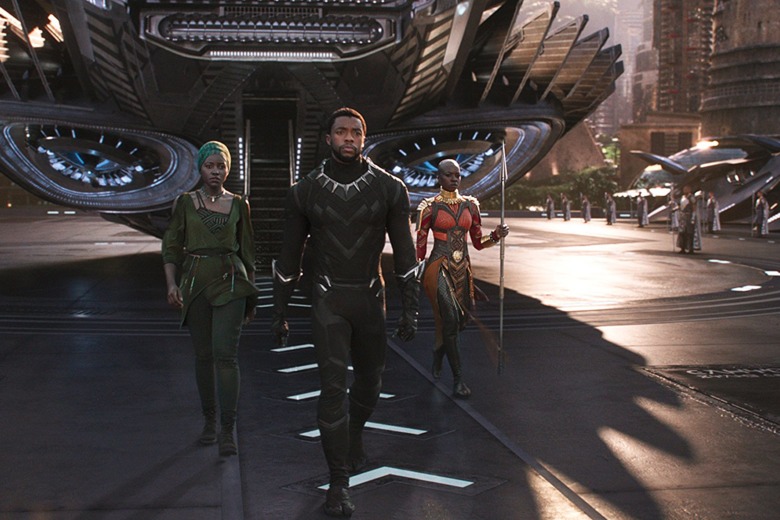A new king of Wakanda is crowned in the latest entry into the Marvel Cinematic Universe.
“Black Panther” is written and directed by Ryan Coogler (Creed) and stars Chadwick Boseman as the Black Panther himself.
Boseman first made his appearance in this role in “Captain American: Civil War.” Now his character, T’challa, returns home to Wakanda after the death of his father. Here, he takes over the role of king, a position his father held before him.
As king, T’challa presides over a country thought to be one of the most underdeveloped in the world, when in fact it is the most advanced. T’challa does not feel ready to take on this major role, but he does what he must anyway. This is where his internal struggle of identity originates.
Lupita Nyong’o plays the role Nakia, a character that left her country in order to work as a foreign aid independent of Wakanda. Her character also serves as an influential love interest to T’challa.
The relationship between T’challa and Nakia is one of the most interesting dynamics in the movie. The two have opposing views on how the nation of Wakanda should be run. They balance each other out well, providing dialogue between them in many scenes.
The country of Wakanda and its leader face the outside threat of a character named Klaue played by Andy Serkis. Klaue has been smuggling a valuable material called Vibranium out of Wakanda to sell it to anyone willing to pay his price. Vibranium is the strongest material in the world of Marvel and was used to advance the technology and weapons of Wakanda, the only place where it can be found.
Klaue is your stereotypical bad guy who just loves to be evil. He is fundamentally uninteresting as a villain. At times it feels like his only purpose is to give Black Panther something to fight. The only saving grace is Andy Serkis’ performance as Klaue. He looks to be having a great time playing the scummy smuggler, and it truly shows.
“Black Panther” suffers from having too many characters. They all give solid performances, but the movie doesn’t give you much reason to care for most of them. Martin Freeman’s character, Everett K. Ross, who is in a large majority of the movie, feels like he was shoehorned in there.
The true threat to Black Panther and his country is Killmonger who is played by the very talented Michael B. Jordan. Jordan starred in Coogler’s last film Creed as a fiery, young boxer. Here, he brings that same fire in playing Killmonger, a man eyeing the throne of T’challa.
Killmonger is a standout in a world of superhero films with less than compelling antagonists. The audience gets to know Killmonger throughout the whole film and even become sympathetic of him.
The problem with Killmonger is that he does not play a significant role in affecting the plot of the movie until late in the second act. Up until that point, the movie seems to look for its purpose.
“Black Panther” spends most of its time focused on the conflicts between T’challa and Klaue, who is an uninteresting villain resting on the crutch of Andy Serkis’ charismatic performance. This causes a chunk of the middle of the movie to drag on in an already two hour and fifteen minute long runtime.
Coogler is great at filming action. He proved this to be true with incredible fight scenes in his film “Creed.” With “Black Panther,” he has once again delivered. The action leading up to the end of the movie looks great but feels uninvolved. The end of the movie follows through with some great fight scenes that are driven by emotion that the audience can feel.
When the film finally gets to the conflict over the battle for the throne, things start to ramp up. This is where the movie thrives and will leave viewers satisfied by its ending. The last thirty minutes of “Black Panther” is powerful in its story and its images, even though it is slightly deluded by drawn out fight scenes.
2.5/4 stars
Photo courtesy of Marvel Studios

